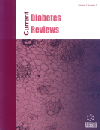
Full text loading...
We use cookies to track usage and preferences.I Understand
In this complex realm of diabetes, hyperinsulinemia is no longer regarded as just a compensatory response to insulin resistance but rather has evolved into an integral feature. This comprehensive review provides a synthesis of the current literature, including various aspects associated with hyperinsulinemia in diabetic complications. Hyperinsulinemia has been shown to be more than just a compensatory mechanism, and the key findings demonstrate how hyperinsulinism affects the development of cardiovascular events as well as microvascular complications. Additionally, recognizing hyperinsulinemia as a modifiable factor, the diabetes management paradigm shifts towards cognitive ones that consider the use of lifestyle modifications in combination with newer pharmacotherapies and precision medicine approaches. These findings have crucial implications for the clinical work, requiring a careful appreciation of hyperinsulinemia's changing aspects as well as incorporation in personalized treatment protocol. In addition, the review focuses on bigger issues related to public health, showing that prevention and early diagnosis will help reduce the burden of complications. Research implications favor longitudinal studies, biomarker discovery, and the study of emerging treatment modalities; clinical practice should adopt global evaluations, patient education, and precision medicine adaptation. Finally, this critical review provides an overview of the underlying processes of hyperinsulinemia in diabetes and its overall health effects.

Article metrics loading...

Full text loading...
References


Data & Media loading...

